Posted by Powee Celdran
Surprising Facts on the Mixed DNA of all the Byzantine Emperors

WARNING: THIS IS A VERY LONG ARTICLE
Welcome back to another Byzantium Blogger article! It’s been a long time since I last wrote about and posted something, and now I’m back with my first article for this year 2020. Now I have finished off 2019 with an article of who I think are the best and worst Byzantine emperors, and now I will begin 2020 with another article on all the Byzantine emperors, but not on their lives, stories, achievements, failures, and personalities but on their ethnic origins that a lot of don’t know of. It is quite interesting to know the Byzantine emperors over 1,100 years from 330-1453 had a lot of mixed DNA especially since throughout Byzantine history, the imperial families had married many times into various royal families across Europe and the Near East making the emperors of the Byzantine Empire (the Eastern Roman Empire) a large mix of races. First of all, the Byzantine Empire itself was the Roman Empire continued in name and in origin but as its capital moved east to Constantinople, many of its people became Greek and spoke Greek and over the years eastern cultures influenced the empire’s culture itself but the ethnicities of not only its emperors but its people were mixed as the empire consisted of Greeks, Illyrians, Thracians, Slavs, Armenians, Isaurians, Bulgars, and more. Now in this article I will categorize it per dynasty of the emperors and discuss what ethnicities the emperors had based on where their parents came from and in some cases, where the emperors who started the dynasty came from. This article will then go through all the emperors of Byzantium from tis founder Constantine I the Great in the 4th century to the last emperor Constantine XI in the 15th century and as the history progresses, you will notice that the emperors of Byzantium’s later years have more mixed blood than those of the ones in the earlier years, this is also because as Byzantium’s history progressed, more kingdoms and empires had formed all over Europe compared to the earlier centuries when Byzantium as the Eastern Roman Empire was the world power. Many Byzantine emperors though were of Greek ethnicity as the Greeks were the majority race of the empire but many were not Greeks too despite being inhabitants of the empire but they found their way to becoming emperors mostly by being in the army, and here you will also come to notice that many of Byzantium’s emperors were military men and from military families too. Here in this article, you will be surprised to find out that some Byzantine emperors came from a mountain tribe race, which were the emperors of Isaurian ethnicity and you will also be surprised to see that one of the emperors came all the way from Spain in the far west, that one was of German descent, that one was of Arab descent, that many were Armenians, that the most influential emperor of Byzantium originated from an Illyrian peasant family, that the emperors of the last dynasty or the Palaiologos Dynasty had a mix of Greek, Hungarian, Armenian, Bulgarian, Italian, and Serbian blood, and the biggest mystery of all that the renowned Macedonian Dynasty of Byzantium may not have existed if not for 2 of its emperors if the rumours were true that its second emperor was the illegitimate son of the last emperor of the previous dynasty. Also, in this article I will give a quick introduction to the places some emperors originated in and its people, particularly the Illyrians, Thracians, Isaurians, Iberians, Ghassanids, Bulgarians, and Serbians; though the introduction to each race will only be mentioned once and another emperor of the same race as the previous will no longer have the ethnic introduction as it had already been mentioned. On the other hand, I have also made articles in the past that relate to this including the one of the genealogy of the Byzantine emperors which will help you understand the lineages and ethnicities of the different emperors as well as the other articles I’ve made too on foreign lands and people in the Byzantine times. Before starting off, this article may be a bit long as it covers all the emperors but not too long and also it will be an easy read as it only covers the ethnic origins and nothing more about their stories except only if their reputation as emperor had to do with their races. Now, let us begin!




Other Related Byzantine Articles by The Byzantium Blogger:
The Complete Genealogy of the Byzantine Emperors
Greatest and Worst Byzantine Emperors
12 Turning Points in Byzantine History
The Byzantine Emperors and their Personalities Part1
The Byzantine Emperors and their Personalities Part2
The Byzantine Emperors and their Personalities Part3
A Guide to the Byzantine Empire’s Themes
15 Related States Outside Byzantium Part 1 (1-7)
15 Related States Outside Byzantium Part2 (8-15)
Foreign Lands and People According to the Byzantines Part1
Foreign Lands and People According to the Byzantines Part2
7 Reasons to be Interested in Byzantium
Related Videos:
The Roman Imperial Family Tree (by Useful Charts)
The Byzantine Imperial Family Tree (by Useful Charts)
Note: Names of Byzantine Emperors will be in BOLD letters
The Constantinian Dynasty (305-363)

The first dynasty to rule the Byzantine Empire was the Constantinian Dynasty, which was also one of the many dynasties that ruled the Roman Empire but was a short-lived one too. Its founder was not Constantine I the Great, the founder of the Byzantine Empire but his father Constantius I Chlorus, a Roman emperor of the Roman Tetrarchy ruling the western half of the empire as Caesar or junior emperor from 293-305 with Maximian as the Augustus or senior emperor, and from 305 to his death in 306, Constantius I was the Augustus of the western half of the Roman Empire. Constantius I though a Roman emperor was ethnically an Illyrian but considered Roman as he lived within the empire and was a citizen. Now the Illyrians were the people that lived in the Balkans or Southeastern Europe- particularly Albania, Kosovo, Montenegro, Bosnia, and Croatia in the ancient days of the Greeks and Romans, being the northwestern neighbors of the Greeks before the Slavs arrived in the 7th century; the people here though not entirely Greek in ethnicity were civilized and not barbarians, had been both Hellenized and Romanized by Greek and Roman culture and many of its people in the age of the Roman Empire rose up to become successful generals in the Roman army especially against the Goths in the northern borders as the Illyrian people knew the borders of the Roman Empire in that part well and were needed to protect it from Goth invasions. Constantius I was born in the province of Dardania (today’s Southern Serbia), which was part of the region known as Illyria said to be born to a Roman noble family there of its local Illyrian ethnicity. When still a general before becoming ruler of the western part of the empire, Constantius I married Helena, a Greek woman from the province of Bithynia in northwestern Asia Minor making their son, the first Byzantine Emperor Constantine I the Great (r. 306-337) half-Greek, half-Illyrian but since living in the Roman Empire, a Roman whose real name was Gaius Flavius Valerius Aurelius Constantinus but born in today’s Niš, Serbia in 272. Constantine I succeeded his father as emperor of the west after his father’s death in 306, in 312 he became sole ruler of the western empire after defeating all rivals, and in 324 gained control of the whole Roman Empire both east and west, and in 330 he established Constantinople, a new city in the narrow Bosporus sea between Thrace and Asia Minor as the new capital of the Roman Empire, now the Byzantine Empire. Constantine I’s 3 sons and successors Constantine II (r. 337-340) who ruled the westernmost third, Constans I (r. 337-350) who ruled the central third, and Constantius II (r. 337-361) who ruled the eastern third including Constantinople were his sons with his 2nd wife Fausta, the daughter of Constantine I’s former rival emperor in the west Maximian (r. 285-310) and his wife Eutropia. Fausta’s father Maximian was one of the 4 original Tetrarch rulers of the empire aside from Diocletian, Galerius, and Constantius I but he stayed in power on and off after he retired in 305 as he never wanted to retire but stay as emperor until he forced to commit suicide by his son-in-law Constantine I in 310. Like Constantius I, Maximian too was an Illyrian, born in Sirmium in today’s Serbia and rose up to power by being in the Roman army being a close friend and ruling partner of the Tetrarchy’s founder Diocletian (r. 284-305), another Roman Illyrian too who was born in today’s Croatia; however Maximian’s wife Eutropia’s ethnic origins are unknown, but their daughter Fausta and son Emperor Maxentius (r. 306-312)- another western rival of Constantine I- had Illyrian blood and Fausta’s 3 sons with Constantine I who all became emperors had a mix of Illyrian and Greek blood. The 3 sons of Constantine I though never succeeded in ruling as the eldest one Constantine II (real name: Flavius Claudius Constantinus Augustus) was ambushed in battle by his youngest brother Constans I (real name: Flavius Julius Constans) in 340 for trying to invade Italy which Constans I held and Constans I was assassinated by one of his generals who had plotted to take over, and in 350 the middle son Constantius II (real name: Flavius Julius Constantius) was the sole ruler of the empire until his death in 361 leaving behind no heirs, instead he was succeeded by Julian (r. 361-363) his first cousin also from Constantine’s family. Julian known as “the Apostate” for renouncing Christianity was the son of Constantine I’s half-brother Julius Constantius and his wife Basilina a Greek woman in ethnicity but the daughter of Julius Julianus, the Roman governor of Egypt who was ethnically Greek. Julius Constantius was the son of Constantine the Great’s father Constantius I with his 2nd wife Flavia Maximiana Theodora whose ethnicity is unknown as well as her parentage as she could either be the emperor Maximian’s daughter with his first wife of the daughter of Maximian’s 2nd wife Eutropia with her first husband. Anyway the emperor Julian (real name: Flavius Claudius Julianus) had a mix of Illyrian blood from his father’s side and Greek blood from his mother’s side but his Greek blood could be seen more in his philosophical and intellectual personality; although he was one person of a tragic story since his mother died after giving birth to him and his father was murdered when he was only 5 in 337 being falsely accused by Constantine the Great’s sons the 3 emperors for poisoning their father. Julian grew up an orphan hating his cousins especially Constantius II, although he also married Constantius II’s sister Helena who died in 360 and Julian ruled alone as emperor until his death in 363 in battle against Sassanid Persia; he then died as the last male member of the Constantinian Dynasty and last grandson of Constantius I Chlorus at only 31, he was then succeeded by his bodyguard commander Flavius Jovianus Augustus who became Emperor Jovian (r. 363-364) after being elected by the army. The new emperor Jovian who was a military man of no dynasty was also another Roman Illyrian, born in 331 in today’s Belgrade, Serbia, which was then Singidunum, although on the return trip from Persia to Constantinople, Jovian died in February of 364 before in Asia Minor before reaching the capital at only 33.




The Valentinian Dynasty (364-379)

After Jovian mysteriously died in his tent in 364 before arriving back in the capital at only 33, the army elected another of their commanders to be emperor, and the person they elected was Flavius Valentinianus Augustus or Valentinian I (r. 364-375), also another Roman Illyrian. In this age of the Roman Empire, it turns out many of its emperors were no longer from the ancient patrician families of Rome like the Julio-Claudians of the 1st century where the emperors Augustus (r. 27BC-14AD) and Claudius (r. 41-54AD) came from but were from military families from the provinces, particularly Illyrians as many army men of the Roman Empire came from this part. Valentinian I’s family too were Roman citizens of Illyria coming from a prominent military family there although his father Gratian the Elder was an Illyrian of humble origins who gained wealth from years of serving in the Roman army and rising up the ranks. Valentinian I born in 321 and his brother Valens born in 328 were born rich in their family estate in today’s northern Croatia near the town of Vinkovci today and growing up they were well educated and not only trained in war but in painting and sculpture, later on both brothers became commanders in the army under the emperors Constantius II, Julian, and Jovian. From February to March of 364, Valentinian I ruled the whole Roman Empire from Constantinople but by the end of March of 364 he decided to rule the western half from Milan leaving his younger brother Valens (real name: Flavius Julius Valens Augustus) as emperor of the east based in Constantinople. Valentinian I’s first wife was Marina Severa, who’s ethnicity is not clear but is possibly Illyrian too like him and their son together was Gratian born in 359 in Sirmium in what is today Serbia. Gratian became co-emperor with his father in the west in 367 and became senior emperor after his father’s death from a stroke caused by his own anger due to annoyance from barbarian tribes negotiating with him in 375. Valens meanwhile ruled the east till his death in 378 being killed in battle against the Goths in Adrianople wherein his body was never found and from his death in August of 378 Gratian was sole ruler of both east west until January of the next year when he appointed the general Theodosius from Spain as ruler of the east who will be discussed later. Gratian ruled as senior emperor of the west with his younger half-brother Valentinian II born in 371, son of Valentinian I and his 2nd wife Justina, whose ethnic origin is unknown too except that she was the daughter of Justus, the Roman governor of Picenum in Italy which makes him probably a Roman Italian, so Valentinian II and his sister Flavia Galla the children of Valentinian I could have had Italian blood mixed with Illyrian. Valentinian I’s elder son Gratian however was assassinated in 383 and Valentinian II ruled as sole ruler of the west with Theodosius I as ruler of the east until Valentinian II mysteriously died in 392 leaving Theodosius I as sole ruler of the empire till his death in 395.

The Theodosian Dynasty (379-457)

In the eastern part of the Roman Empire, the Valentinian Dynasty ruled for only 15 years as a new person from a different family was put in charge of the east in 379 and he ruled successfully, this person was Theodosius I the Great (real name: Flavius Theodosius Augustus), a Roman of Iberian Spanish descent ruling the empire miles away from his native land from 379 to his death in 395. Theodosius I was a Roman of Iberian ethnicity, a native of Roman Spain born in 347 in Coca in what is today Segovia in Central Spain, his father the successful general Theodosius the Elder who was executed in 376 and mother Thermantia too were Roman Iberians, and in his father’s side the emperor Theodosius I though being mostly of Iberian descent, traces his ancestry to Sextus Julius Caesar, a Roman general based in Spain in the last days of the Roman Republic, a relative of Julius Caesar and possibly even his brother. Before going onto Theodosius I and his family, the Iberian people were what can be called the native inhabitants of Spain and Portugal in Roman times and earlier which were people descended from both Celts that settled in the Iberian Peninsula and Phoenicians or Carthaginian people from North Africa and when settled in the Iberian Peninsula mostly became agricultural people and not so much of warriors, at the same time many historians and writers all the way back to Herodotus from Ancient Greece to the Byzantine emperor Constantine VII in 10th century who will be discusses later document about the Iberian people and their native land, which is today’s Spain as well as Portugal. Meanwhile, the family of Theodosius I was a rich and powerful military family in the Iberian Peninsula being mostly of Iberian descent but Roman citizens too who lived in a large estate which happens to be in the farthest reaches of Spain which is in today’s Galicia, located in north-west Spain north of Portugal and along the Atlantic Ocean. Theodosius I was already a successful commander at a young age serving under his father but when his father was executed in 376, he retired at a young age to manage his family’s large estate in the far reaches of Spain, at this point he had married Aelia Flaccilla, also an Roman Iberian woman and in 377 they had their first child who would be the future emperor Arcadius.
In 379, Theodosius was invited to be emperor of the east by Gratian, who ruled at the west and was a close friend but he couldn’t rule the empire alone so Theodosius travelled thousands of kilometers across the empire from his native Spain to Constantinople where he would rule for the next 16 years and during this time in 384, his 2nd son Honorius was born also to him and Aelia Flaccilla though she would eventually die and Theodosius would be married again to Valentinian I and Justina’s daughter Flavia Galla making Theodosius part of the Valentinian Dynasty as well. After the death of Theodosius I’s brother-in-law Valentinian II in 392, he became the sole ruler of the whole Roman Empire but the last one to do it too as he died in 395, permanently dividing the empire between his 2 sons with Aelia Flaccilla, Arcadius (r. 395-408) who would rule the east from Constantinople and Honorius (r. 395-423) would rule the west from Milan later moving the capital to Ravenna in 402. From what I read in the History of the Byzantine Empire by Radi Dikici, Arcadius’ (real name: Flavius Arcadius Augustus) physical appearance was described as being short, dark-skinned, and curly haired before the arrival of the Visigoths and Moors in Spain must have looked like, which means his younger brother Honorius (real name: Flavius Honorius Augustus) who was also of Iberian descent must have looked like this as well and so was their mother and father; anyway, other than Arcadius’ and Honorius’ unique physical appearance and distinct Iberian genes, they were overall ineffective rulers who almost led both eastern and western empires to collapse due to the start of the barbarian invasions of the Roman Empire particularly, the Visigoths who would eventually settle into Spain, where their family came from. Honorius’ half sister on the other hand was the empress Galla Placidia of the Western Roman Empire, the daughter of Theodosius I and Flavia Galla, the daughter of Valentinian I and Justina making the empress Galla Placidia a mix of Illyrian blood from her maternal grandfather, Italian blood from her maternal grandmother, and Iberian blood from her father’s family; Galla Placidia was then first married to Ataulf the king of the Visigoths and later to the Roman Illyrian general Constantius III (r. 421) as Honorius’ co-emperor, and with Constantius III, Galla Placidia’s son was Emperor Valentinian III (r. 423-455) as the last ruler of the Theodosian Dynasty in the Western Roman Empire, though he was a mix of Illyrian blood from his father’s side and Illyrian, Italian, and Iberian blood from his mother’s side.
In the east on the other hand, the emperor Arcadius was married to Aelia Eudoxia, a woman who was half-Roman and half-barbarian as her father was a Romanized Frank named Flavius Bauto who was by blood from the Germanic tribe of the Franks east of the Roman borders in Germany and her mother was a Roman woman probably an Italian, however Aelia Eudoxia died in 404 before her husband Arcadius died in 408. Arcadius was succeeded by his 7-year-old son Theodosius II (r. 408-450), who would rule the eastern empire successfully for a long time until his death in 450; Theodosius II was married to Aelia Eudocia who was a Greek while Theodosius II and his influential sister Pulcheria were of Iberian descent from their father’s side and Frankish and Roman descent from their mother’s side giving them quite an interesting mix of genes, however Theodosius II died without an heir so his older sister Pulcheria ruled as empress for a short time in 450 until marrying the military officer Marcian (real name: Flavius Marcianus Augustus), another Roman Illyrian and military man born in 392 most likely in Illyria. Marcian (r. 450-457) however was more or less a puppet emperor to Aspar, a powerful Goth general and when Marcian died in 457 4 years after Pulcheria, Aspar placed the Thracian officer Leo as emperor.





The Leonid Dynasty (457-518)

Following the death of Marcian in 457, the Eastern Roman Empire now becoming the Byzantine Empire independent and stronger than the Western Roman Empire would be ruled by another dynasty founded by Leo I the Thracian, which would become a very ethnically diverse dynasty. The dynasty’s founder Leo Marcellus was a Roman citizen of Thrace, the land northeast of Greece where Constantinople is located, although Leo’s family was said to be of Dacian origin coming from the people of Dacia, the barbarians tribes of today’s Romania the Romans conquered centuries before, though it is more believed that Leo was of Bessian stock, coming from the Bessi people, which were the Thracian tribes that lived in the Rhodope mountains that border today’s Bulgaria and Greece. Leo though being a successful commander grew up uneducated but as emperor reigning Byzantium from 457 to his death in 474 was a successful emperor, meanwhile his wife Verina and her brother Basiliscus who would later become emperor (475-476) have unclear origins but have most likely come from the Balkans and are either ethnically Thracian or Illyrian. Leo I as emperor got the title Leo I the Thracian form his Thracian origins; the Thracians on the other hand were the people who lived in today’s Bulgaria, northeast Greece and European Turkey and although they were neighbors with the Greeks, the Greeks and later the Romans saw them as barbarians due to their more unsophisticated clothing, fighting styles, and living conditions but these people over the years adopted Greek culture and language and even intermarried with the Greeks making many Thracians have Greek ancestry as well. Under the Romans, many Thracians had become gladiators but some had also become powerful soldiers and even emperors like Leo I and in the next centuries, these Thracian people would evolve to become Greek speaking as many Greeks of Thracian origins would become Byzantine emperors. By the late 7th century however, Bulgaria, which was back, then Thrace would be settled by the Asiatic Bulgar people who would also intermarry with the native Thracians. On the other hand, Leo I did not want to be controlled by powerful Goths like Aspar who made him emperor and instead he got rid of the Goths, had Aspar assassinated, and replaced the Goths with the Isaurian mountain tribes as his trusted warriors and his and Verina’s daughter Ariadne who was mostly of Thracian descent would be married to the Isaurian tribal chief and general Zeno who would take Aspar’s place in controlling the army.
Now with Isaurians coming in, Leo’s dynasty became more ethnically diverse as these Isaurian people were totally foreign and backward mountain people from the wild region of Isauria in the Taurus Mountains of Southern Asia Minor, in today’s border of Turkey and Syria. The Isaurian tribes of the Tuarus Mountains were described by many historians as rough, uncivilized, and barbaric marauders, living in backwards unsophisticated mountain ways having unsophisticated and crude clothing and weapons but were skilled and vicious warriors known for banditry that it was said that in history they had attacked many Romans that had passed their region by surprise which gave the Isaurians a bad name by the Romans throughout history. Leo I died in 474 succeeded by his grandson Leo II, the son of his daughter Ariadne and the Isaurian Zeno but by the end of the year, 7-year-old Leo II died and his father Zeno succeeded him beginning his reign already unpopular because of his Isaurian ethnicity. Though being seen by everyone especially Greeks and Roman of Byzantium as a savage, Zeno whose extremely long real name Tarasis Kodisa Rousombladadiotes was already the chief of the Isaurian mountain tribe when he came to Constantinople and married Ariadne and he was of royal birth being the son of the former tribal leader Kodisa, except that when he went to Constantinople to serve under Leo I he changed his name to the Greek Zeno to make him more acceptable to the population, but even when changing his name, the Byzantine people who were mostly Greek at this point could not accept being ruled by someone of the savage people they have hated over history, also at the same time, Zeno’s Isaurian tribesmen who came to serve the empire to became very arrogant. Only a few months into Zeno’s reign, he was banished from power early in 475 and fled to his native Isauria while Basiliscus, brother of Leo I’s wife Verina took over the empire allowing the people to kill any Isaurian they see, though later on in 476 Zeno returned to power and banished the incompetent Basiliscus. Zeno in his 2nd reign from 476-491 still remained highly unpopular not only because of his race but because in 476 the Western Roman Empire was completely dissolved but Zeno fought hard to stay in power and make the eastern empire stable even though by violent means and when he died in 491 of epilepsy, the Isaurian Zeno actually managed to remain in power without being overthrown again. With Zeno dead, the people now wanted a real Roman emperor and not an uneducated barbarian foreigner like Zeno but also the people were tired of violent men like Leo I, Basiliscus, and Zeno running their empire, also tired of massacres and barbaric Isaurians running the state, so the people demanded for someone more civilized and educated to be emperor, which then made Zeno’s widow Ariadne marry the finance minister Flavius Anastasius who then became Emperor Anastasius I Dicorus (r. 491-518), an old man who was not a soldier but a rich Roman Illyrian as well born in Dyrrhachium in today’s Albania; the Illyrian Anastasius I was known for his mismatched eyes where one pupil was black and the other blue giving him the nickname Dicorus but he was a successful economist emperor who made the empire rich and avoided violent conflicts as much as possible, he had also outlived his wife Ariadne by 3 years dying in 518 without an heir.

The Justinian Dynasty (518-602)

The 6th century be a golden age for the Byzantine Empire after the emperors Zeno and Anastasius I left the empire stable and rich, though after old Anastasius I died in 518, he did not exactly have any heir but he couldn’t decide on which nephew would succeed him, so instead the army elected Justin, an illiterate man of low birth as emperor, although Justin had also bribed his colleagues, the palace guards to elect him as emperor. Justin I (r. 518-527) was born to peasant family in Dardania in around 450, which is today’s North Macedonia and Southern Serbia back then under the Eastern Roman Empire; Justin I (real name: Flavius Iustinus Augustus) was of Illyrian and Thracian descent but grew up poor despite speaking Latin as his first language and knowing very little Greek, and to escape poverty in his native Illyria, he travelled to Constantinople to find work eventually become part of the army under Emperor Anastasius I and later on becoming a member of the emperor’s palace guard or Excubitors and eventually becoming its captain, and basically out of luck he became emperor after Anastasius I died. Justin I though was old and had no sons, so instead he adopted his nephew Flavius Petrus Sabbatius Iustinianus as his heir and when Justin I died in 518, his nephew succeeded him as Emperor Justinian I the Great (r. 527-565), being Byzantium’s most influential ruler. Flavius Petrus Sabbatius was the son of Justin I’s sister Vigilantia and a former Byzantine soldier named Sabbatius, born in around 482 during the reign of Zeno in the same area in Dardania where his uncle was born and like his uncle he was of low birth as well but at an early age, he already left his native homeland for Constantinople where he grew up well educated as his uncle now in the palace guard paid for his education. By the time Justin I died in 518 and his nephew succeeded him as Justinian I, the nephew was already a genius at many subjects, fluent in both Latin Greek, and a critical thinker. Like his uncle, Justinian I was also a native of the Balkans and of Thracian and Illyrian Roman descent but despite coming from humble origins, he had great dreams for his empire, probably since childhood he already had these dreams and particularly his mission was to rebuild the power of the Roman Empire again by the re-conquest of Italy from the Ostrogoths, North Africa from the Vandals, and Spain from the Visigoths as well as codifying the laws, reforming the finance system, and having great construction projects including the great church of the Hagia Sophia in Constantinople. At the end Justinian I achieved these dreams of his but it was difficult as his empire which was on its way to success faced a deadly plague in 542 but Justinian I still managed to put everything back together and when he died in 565, the Byzantine Empire was at its greatest territorial extent stretching west to east from Spain to Syria, north to south from Ukraine to Egypt.
The influential person too behind the spectacular reign of Justinian I was his wife Theodora, a woman of Greek Cypriot descent born in 500 in Cyprus, although her Cypriot origins had made her unpopular as Cyprus was a far away land seen as backwards by the Greeks of Constantinople, but also she had been unpopular for coming from a poor background beginning as a circus performer. Theodora and Justinian I however had no children and Theodora died in 548, 17 years before Justinian I died, and Justinian never remarried afterwards, and when he died at 83 in 565 he was succeeded by his nephew Justin II (r. 565-578), born in 520 also in their family’s home in Dardania, he was the son of Justinian I’s sister also named Vigilantia and Dulcidio. Justin II or Iustinus Iunior together with uncle Justinian I and grand-uncle Justin I were the last of the Latin speaking Roman emperors and like the rest of his family was also of Illyrian and Thracian Roman descent, although like his uncle Justin II and his wife Empress Sophia had no sons and some years into his reign, Justin II descended into madness becoming unfit to run the large empire his uncle left behind so in 574, Justin II retired and adopted his friend and palace guard commander Tiberius Constantinus who was the same age as him as his heir. From 574-578, Justin II though insane and retired still held the title of emperor but Tiberius actually ran the empire as Caesar, Tiberius on the other hand was Thracian Roman born in Thrace in 520 and was the first of the Byzantine emperors to speak Greek as his native language instead of Latin. Tiberius II Constantine ruled as Augustus or sole emperor from 578 to his sudden death in 582 and having no sons, he was succeeded by his son in law, the Cappadocian Greek Maurice who would marry Tiberius II’s daughter Constantia. With Tiberius II Constantine as emperor, the bloodline of Justin I may have disappeared but it remained in name, as Tiberius II was adopted; on the other hand his wife, the empress Ino Anastasia was a Greek from a Black Sea island in Bithynia, the region of Northwest Asia Minor across the Bosporus from Constantinople and their daughter, the next empress Constantia was of Greek and Thracian descent. Tiberius II’s successor Maurice (r. 582-602) was a Greek from Cappadocia in inland Asia Minor born there in 539, though a provincial, he came from an important family as his father named Paul was the head of the Byzantine senate for a time and when Maurice became emperor in 582, his brother Peter was in charge of managing the palace. With Constantia, Maurice had 6 sons and 4 daughters, he too was a successful military emperor but ended tragically all because the army ran out of funds and he could no longer pay his soldiers in the Balkan frontiers, so these soldiers rebelled, deposed him in 602 making a low birth centurion named Flavius Phocas as emperor. Maurice and his 6 sons were executed by Phocas’ orders in 582, Peter too was executed later on and the empress Constantia and daughters too were executed in 605. The Justinian Dynasty by name ends with death of Maurice in 602 and he was succeeded by the sadistic emperor Phocas (r. 602-610), who only originated as a Centurion or low-ranking army officer of low birth, who by origin was most likely Thracian, though he was born in 547, his place of birth is unknown.



The Heraclian Dynasty (610-711)

The usurping emperor Phocas could have started a new dynasty but in 610, several rebellions raised up against him, especially the one in North Africa by the Exarch Heraclius the Elder. In October of 610, Heraclius the Elder’s son also named Heraclius sailed to Constantinople and overthrew Phocas executing him and was proclaimed Emperor Heraclius (r. 610-641), the emperor who turned Roman Byzantium into a Greek speaking empire. Flavius Heraclius was also born in Cappadocia in 575, his father Heraclius the Elder was a Byzantine of Armenian origin while his mother Epiphania was of Cappadocian Greek origin like Maurice making the emperor Heraclius considered half-Greek half-Armenian, it was also described that Heraclius at the time he became emperor in 610 as tall and muscular with curly light colored hair. Heraclius ruled long defeating the Persians and ending the Byzantine-Sassanid Persian war in 628 but ruled long enough to see the rise of Islam and the Arabs start raiding into Byzantine territory in the Middle East, but Heraclius had also left behind a large family being married twice first to Fabia Eudokia, a Byzantine Greek woman from Carthage where Heraclius grew up in and together they had two children one of which was Constantine III (r. 641) also known as Heraclius Constantine born in around 612, Heraclius’ successor who was mostly of Greek blood and 25% Armenian from his paternal grandfather Heraclius the Elder. Fabia Eudokia died too early also in 612 possibly from epilepsy, so Heraclius married again but out of everyone he married his niece Martina, the daughter of his sister Maria and marrying his niece, Heraclius had 9 children, one of which was Constantine III’s half brother and successor Heraklonas also known as Constantine Heraclius or Heraclius II (r. 641) who ruled with his mother Martina as his regent for a few months after allegedly poisoning Constantine III but in September of 641, Heraklonas and Martina were removed from power by Constantine III’s supporters putting Constantine III’s young son Constans II as emperor.
Constans II (r. 641-668) also known, as Heraclius Constantinus was the son of Heraclius’ first son Constantine III and Gregoria who was also a Byzantine Greek with Armenian ancestry and was the daughter of Niketas, a first cousin of Heraclius. Constans II was mostly of Byzantine Greek blood with Armenian ancestry as well from his great-grandfathers in his mother and father’s sides; Constans II on the other hand was born in 630 and surprisingly he had a twin brother named Theodosius, though at 11-years-old Constans II was appointed emperor by his father’s supporters and not his twin brother, though his twin brother would plot against him later on but would end up being sent to a monastery and executed. Constans II’s reign was faced with advancing armies of the Arabs quickly downsizing the Byzantine Empire forcing Constans II to reorganize the imperial governing system into Themes and to flee Constantinople in 663 in fear attempting to make Syracuse in Sicily as the new Byzantine capital but before that could happen, he was assassinated in his bath in 668 by a slave wielding a soap dish by orders of a rival general named Mizizios, described as a handsome man of Armenian origin who usurped the empire 668-669 until Constans II’s 16-year-old son Constantine IV (r. 668-641) overthrew Mizizios in 669 becoming the rightful emperor. Constantine IV was born in 652 in Constantinople as the eldest son of Constans II and his wife Fausta, the daughter of the general Valentinus who was mostly of Armenian origins, making Constantine IV and his 2 brothers Tiberius and Heraclius have strong Byzantine Greek and Armenian blood as well. From an early age, Constantine IV was already skilled at governing the empire as he was left in charge of Constantinople when his father fled in 663 and in his years as emperor, Constantine IV successfully defended Constantinople from an Arab siege with the use of Greek Fire for the first time, managed to negotiate with the Bulgarian invaders from Central Asia resulting in the establishment of the 1st Bulgarian Empire in 681, and resolve doctrinal conflict, but he died at only 33 in 685 from dysentery; meanwhile the image of the successful emperor Constantine IV can be seen at a church in Ravenna next to his co-emperor brothers Tiberius and Heraclius and his co-emperor son and successor Justinian II. After Constantine IV died young in 685, he was succeeded by his eldest son Justinian II (r. 685-695), born in 669 to Constantine IV and his wife Anastasia whose origins are unknown but most likely she was Byzantine Greek too making Justinian II have more Byzantine Greek than Armenian blood. Due to his tyrannical rule and delusions in conquests against the Arabs and Bulgars, Justinian II was overthrown by the people, senate, army, and Church in 695, his nose was cut off and he was exiled to Cherson where he would marry a Khazar or semi-Nomadic Turkic princess who he renamed Theodora as Justinian II saw himself as the new Justinian the Great but failed to be.
While Justinian II was in exile, these 10 years from 695 to 705 witnessed 3 changes of emperor, first the Isaurian descended general Leontios took over from Justinian II in 695 and he was the next Isaurian to rule Byzantium since Zeno but 3 years later in 698, Leontios was overthrown and replaced by Tiberius III Apsimar (r. 698-705), who was an unusual character as he was blond and of Germanic descent having strong German blood, most probably his family were Germanic mercenaries in the Byzantine army. However in 705, Justinian II returned from Cherson in today’s Ukraine coast of the Black Sea with his new Khazar wife and already with their newborn son and heir Tiberius who was half-Greek, half-Khazar, although Justinian II now known as Rhinotmetos in his 2nd reign for having his nose cut off became more brutal than ever executing anyone who wronged him in the past leading to more uprisings against him and in 711, he was overthrown again and this time executed by the rebel general, the Armenian Bardanes who first had Justinian II’s young son and co-emperor Tiberius killed before killing the emperor, and as emperor Bardanes or Vardan in Armenian changed his name to the Greek Philippikos and only reigned for 2 years from 711-713 as he was overthrown and replaced with his secretary, a Byzantine Greek named Artemios who as emperor became Anastasius II (r. 713-715) but was overthrown in 715 and replaced by a random tax collector of Byzantine Greek origin as well who as emperor became Theodosius III (r. 715-717) but had no interest in ruling so rebellion rose up against him by the general Konon in which Theodosius III abdicated in favor of.


The Isaurian Dynasty (717-802)

In 717, the 22 years of anarchy Byzantium went through since the first overthrow of Justinian II in 695 had come to an end, and so did Byzantium’s first age, now Byzantium enters its second age where the empire has already become fully Greek and no longer Roman in language and identity, and only Roman in its imperial legacy. In 717, an Isaurian once again took the Byzantine throne, though it has been almost 300 years since the Isaurian Zeno had become emperor, so in the 8th century compared to the 5th, the Isaurians from the Taurus Mountains of Southern Asia Minor must have already become more civilized people. The new Isaurian who came to the Byzantine throne in 717 was Emperor Leo III the Isaurian or Syrian (r. 717-741), originally he was an Isaurian named Konon born in Isauria which was then Byzantine Syria in around 685 and at a young age his Isaurian family was relocated by Emperor Justinian II to Thrace where Konon lived his life as a shepherd without ever thinking he would be emperor one day. In 705, when Justinian II was on his way back to Constantinople passing through Thrace, he encountered the young shepherd Konon and noticed that Konon had a special gift which included speaking Arabic so Justinian II made Konon serve him as a spy and later he became the general or Strategos in charge of the Anatolian Theme in 715 under Anastasius II. In 717, Konon and his Theme’s army with the help of the Armenian Theme Strategos Artavasdos led a rebellion to take the throne and after forcing Theodosius III to abdicate, Konon became Emperor Leo III who ruled long and was best known for defending Constantinople for a second time against the Arab Umayyad Caliphate from 717-718, beginning the Iconoclast movement that shook the empire apart and led to Venice declaring independence from Byzantium, but was also know for once again reviving the power of Byzantium that had fallen over the years. Leo III’s wife Maria was probably a Thracian and with her his known children were his son and successor Constantine V (r. 741-775) and Anna who were half-Isaurian half-Thracian, although it is unclear if they were of Thracian descent too as it is not said where their mother came from. Leo III died in 741 and was succeeded by his son Constantine V nicknamed Kopronymos or shit-named and a year into his reign he was overthrown by his brother-in-law; the same Artavasdos who helped Leo III take the throne. Artavasdos (r. 742-743), was Armenian by origin with the Armenian name Artavazd and with Leo III as emperor, Artavasdos was his closest friend and advisor, was married to Leo III’s daughter Anna who he had children with, and was promised to succeed Leo when he died, however Leo III had a son so it was natural the son succeeded. In 743, however Constantine V returned to power after defeating and blinding Artavasdos and his sons sending them to a monastery and as emperor for the next many years Constantine V ruled successfully fighting off the Arab and Bulgar invaders but was a controversial figure for zealously leading the campaign against icons. Constantine V was first married at only 14 to the Khazar princess Tzitzak, daughter of the Khazar ruler Bihar who when married converted to Christianity and changed her name to Irene for an alliance with the Khazars. The Khazars meanwhile were a semi-nomadic but powerful Turkic tribe that converted to Judaism and formed their kingdom called Khazaria north of the Black Sea in what is today Southern Russia and Ukraine as well as parts of the Caucasus and the Caspian Sea area, they too were a powerful buffer state fro the Byzantines against the Huns and Arabs with a strong army of nomadic cavalry and Byzantium saw them as a powerful ally; the Khazar kingdom meanwhile existed from 650-969. With the Khazar Tzitzak renamed Irene, Constantine V had only one son named Leo after his grandfather who succeeded him after his death in 775 as Emperor Leo IV (r. 775-780) nicknamed “the Khazar” as he was half-Khazar from his mother while on his father’s side he had Isaurian and Thracian blood; the empress Tzitzak though was never recorded after giving birth to Leo IV as she probably died after giving birth to him in 750, although her name is the Greek translation of the Turkic word çiçek meaning flower. With his other wife Eudokia, a Byzantine Greek Constantine V had 5 sons named Christopher, Nikephoros, Niketas, Eudokimos, Anthimos and one daughter Anthousa, although it was still the eldest Leo IV that succeeded but he died 5 years into his reign in 780 from tuberculosis. Constantine V though had arranged for his son and successor Leo IV to be married to Irene Sarantapechaina, a Byzantine Greek noblewoman from Byzantine Athens born in 752 in the Athens that was no longer the powerful metropolis it was in Greek times but a quiet intellectual center; Irene though was orphaned but Irene was an ambitious one who plotted to make herself empress to end the Iconoclast movement. Leo IV and Irene’s son Constantine VI (r. 780-797) who by blood was Greek, Khazar, Thracian, and Isaurian became emperor in 780 at only 9-years-old so Irene was his regent for the longest time wherein she organized the council to end Iconoclasm but she and her son would constantly fight for power while Constantine VI’s half-uncles (Leo IV’s 5 half-brothers) plotted to take the throne as well. At the end however, the plot of the uncles was stopped and in 797 Irene took the throne as the first woman to be empress after blinding her son and exiling him but her actions had a lot of consequences and it had been a bad time for the empire. In the year 800, a Roman emperor returned to the west when the Frankish king Charlemagne was crowned Holy Roman Emperor by the pope, though Irene thought of making an alliance with him to unite their empires but once again the Byzantine people of Constantinople did not want another barbarian like Zeno to rule them so in 802, Irene was declared deposed and exiled replaced by a man again, the finance minister Nikephoros who founded a new dynasty.

Watch this to learn more about the Khazars (from Kings and Generals).
The Nikephorian Dynasty (802-813)

Following the overthrow of Irene in 802, the Isaurian Dynasty ended and the Byzantine throne was passed into the hands of a man once again, this man was the finance minister Nikephoros I (r. 802-811), though his birthplace is unknown, he was born in around 750 and many sources which were Byzantine, Syrian, and Arabic say he is of Ghassanid Arab origin. It is not clear if Nikephoros I was fully ethnically Ghassanid or was had a small percentage of Ghassanid blood, but Nikephoros claimed not to be a mere Ghassanid descendant but a descendant of the last Ghassanid king Jabalah VI in the 7th century, though it is unclear how he was related to the last Ghassanid king. Now the Ghassanids have a very interesting story coming all the way as far south as Yemen and immigrating to the Levant region in today’s Jordan, which was Roman Empire’s eastern border sometime in the 3rd century and over the years they have settled down, became Christians, merged with Greek community, and formed a kingdom that would be a Roman and Byzantine vassal. These Ghassanids who had settled in the eastern Levant were pre-Islamic Christian Arabs that had formed their own client kingdom beginning in around 220 with Jafnah I Ibn ‘Amir as their first king and they have ruled the area paying tribute to Byzantium until the first Islamic Arab conquest of the 7th century. The Ghassanid kingdom fell in 638 with the first wave of Arab conquests by the Rashidun Caliphate, the first of the Islamic Caliphates forcing their last king Jabalah VI refusing to convert to Islam to flee into Byzantium to make a government in exile, which explains how Nikephoros I almost 2 centuries later could have been a descendant of the last Ghassanid king. It is believable that Nikephoros I is descended from the last Ghassanid king as the Ghassanids were still around only a bit more than a century before Nikephoros’ birth, meanwhile Nikephoros’ parents are unknown so it is unclear how much Ghassanid or Byzantine blood he had, his wife and her ethnicity too are unknown but with his wife Nikephoros I had at least 2 children, his son and successor Staurakios (r. 811) and daughter Prokopia. Nikephoros I ruling for 9 years tried to improve the weakened economy of the empire but had refused to accept Charlemagne’s position as emperor, also Nikephoros was determined to defeat the Bulgarians in battle but in 811 he was ambushed and killed by the Bulgarians in battle and his skull turned into the Bulgar khan Krum’s drinking cup, after his death he was succeeded by his son Staurakios who only ruled for 2 months as the injuries he got from that battle against the Bulgars left him paralyzed. Staurakios’ brother-in-law Michael Rangabe married to Staurakios’ sister Prokopia replaced him as emperor becoming Michael I (r. 811-813) and he was the first Byzantine emperor who’s last name was not Latin or Greek; Staurakios meanwhile retired to become a monk and died the next year. Michael I’s last name Rangabe was of Hebrew origin so that means in his father’s side he was of Jewish descent, though he was a Christian and it is not clear how much Jewish blood he had but it was known that Michael I’s father Theophylact Rangabe was a Byzantine admiral and Michael I was born in 770. With Prokopia, Michael I had 5 children but Michael I’s reign did not last long as 2 years later in 813 he had to abdicate in favor of the Armenian general Leo before Leo could overthrow him, Michael then retired as a monk and died 31 years later in 844. The next emperor was Leo V (r. 813-820), born in 775 known as “the Armenian” because of his Armenian descent as his father Bardas was an Armenian Byzantine, although Leo the Armenian was said to not only have Armenian blood but Syrian blood as well possibly from his mother, Leo’s wife Theodosia too was of Armenian origins. The Armenians meanwhile were one of the largest ethnic populations of the Byzantine Empire usually living in the eastern reaches of the empire in the east of Asia Minor where their homeland is. When Leo V took the Byzantine throne in 813, he was the general in charge of the Anatolic Theme and as emperor he ended the long war between Byzantium and the Bulgars, established the 2nd period of Iconoclasm that ended with Irene, but at the end despite having sons did not establish a dynasty as Leo V was assassinated in the Christmas Mass of 820 ordered by his trusted general Michael of Amorion who helped him gain power in 813.
The Amorian Dynasty (820-867)

In 820, the new but short-lived Amorian or Phrygian Dynasty started and was founded by Michael of Amorion, a Byzantine Greek of Asia Minor born in the city of Amorion in the region of Phrygia in 770 to a family of professional peasant-soldiers. Michael was Anatolian Greek by blood and his family belonged to the religious sect of the Athinganoi, Christians who followed Jewish rituals. Michael rose to power after helping his friend Leo V take the throne in 813 but both began to distrust each other and Leo V had Michael imprisoned before sentencing him to death, but before Michael could be executed, he set up the assassination of Leo V which was carried out in Christmas of 820 and right after Michael II was crowned emperor still wearing his prison chains. Michael II though only ruled for 9 years until his death in 829 and had only one son; Theophilos with his first Thekla who was of Armenian and Byzantine Greek origin, though Thekla had died in 823 and Michael II married again, this time to Euphrosyne, the daughter of the late emperor Constantine VI and his wife Maria of Amnia, Euphrosyne then was the granddaughter of Empress Irene, although they had no children together. Michael II’s only son Theophilos (r. 829-842) succeeded him at 24; he was born in around 805 when his father was still in the army and he was mix of Byzantine Greek and Armenian blood. The emperor Theophilos was married to the Paphlagonian Greek noblewoman Theodora and together they had 7 children and it was their youngest child Michael III that became emperor following Theophilos’ death in 842. Theodora on the other hand came from Paphlagonia, the northern region of Asia Minor along the Black Sea but her family in both her father Marinos and mother Theoktiste’s side were of Armenian origins, Theodora too had 2 brothers Bardas and Petronas who would be influential figures later during her son’s reign. Now Theodora and Theophilos’ son Michael III who was born in 840 was also of Byzantine Greek and Armenian origins and in 842 at only 2-years-old he became emperor following his father’s death though his mother was his regent for the longest time and as regent she finally put an end to Iconoclasm in 843 and restored icon veneration, however the power behind her rule as regent were her brothers the state minister Bardas and general Petronas. Theodora though would later on be exiled to a monastery and a new mysterious Macedonian-Armenian peasant named Basil would rise to power becoming a favorite of Michael III assassinating Bardas first in 866 then he would become co-emperor and assassinate Michael III himself in 867 and would become emperor himself starting the Macedonian Dynasty.

The Macedonian Dynasty (867-1057)

Starting in 867, Byzantium would be ruled by its most glorious imperial dynasty, the Macedonians but this dynasty could have been only 2 emperors as the other members could have not been from the family of its founder, Basil I (r. 867-886). Basil I known as “the Macedonian” was born in 811 in the Byzantine Theme of Macedonia, west of Thrace near the city of Adrianople, although he was known as the Macedonian, his ethnic origins were a mix as in his father Bardas’ side, he had Armenian blood while in his mother’s side there was a mix of Thracian Greek and Slavic blood. Though both Basil’s parents were peasants of low birth, it is said that in his father’s side he is descended from the Arsacid kings that ruled Armenia from the 1st to 5th centuries, also Basil’s ancestry in his father’s side can also be possibly traced to Constantine the Great, the founder of Byzantium. Whatever the case of his ancestry is, Basil I was still born of Armenian, Greek, and Slavic origins in the Macedonian Theme which is why he is known as “the Macedonian” but even though he started out with nothing, he was destined by his mother to become emperor so at an older age he journeyed to Constantinople where his skill with horses got him a job as a horse tamer for the emperor Michael III himself which got Basil close to Michael III but Basil would stop at nothing to gain ultimate power and in 867 he assassinated Michael III and became emperor. Michael III on the other hand could not marry his lover Eudokia Ingerina as her family was Iconoclastic as Michael III’s family ended Iconoclasm and their marriage was a scandal so to keep her close, Michael III married her to Basil. It is then said that Basil’s first son with Eudokia Leo who would later succeed Basil as emperor was not actually Basil’s son but Michael and Eudokia’s illegitimate son as he was born in 866 when Michael was still alive while Basil’s other son Alexander who would also later become emperor is no doubt Basil and Eudokia’s son as he was born in 870 long after Michael’s death. Though born a peasant and illiterate, Basil I was a highly successful ruler who began a new golden age of conquest and the Renaissance of the arts for Byzantium. Eudokia Ingerina on the other hand was certified to be of noble ancestry as in her mother’s side she was a distant descendant of the imperial bloodline of the 7th century emperor Heraclius through Heraclius’ sister Maria while in Eudokia’s fahter’s side, she had a bit of Germanic ancestry as her father’s name Inger suggests some Germanic roots. On the other hand, it is still unclear if Basil I’s successor Leo VI (r. 886-912) was really his son but it was certain he was Eudokia’s son so that would mean Leo VI was mostly Byzantine Greek in blood with traces of Germanic DNA but if he were truly Basil’s son, he would have some Armenian and Slavic blood too; however the only proof there could be that Leo was not Basil’s true son was that Basil hated him and would beat up Leo while Leo also believed Michael III to be his father, meanwhile Leo’s younger brother Alexander was sure to be Basil’s son and his father had made him hate Leo believing Leo was not his brother which is why Alexander had hated Leo all his life. Eudokia however died in 882 before Basil who died in 886 said to be a conspiracy by Leo who had hated Basil too but whatever happened, Leo still became emperor becoming Leo the Wise for his great intellectual works and books he published but in his reign he had been married 4 times and 3 were unsuccessful to produce a male heir, it was only with his controversial marriage with his 4th wife Zoe Karbonopsina that Leo VI had a son, who would rule later as Emperor Constantine VII Porphyrogennetos born in 905. Leo VI suddenly died in 912 and was not succeeded by his young son but by his younger brother Alexander who has already been made co-emperor since their father Basil I’s reign, though Alexander ruled for only a year dying in 913 after a polo game passing the throne now to the young Constantine VII who ruled until 920 with the regency of his mother Zoe Karbonopsina until the Armenian admiral Romanos Lekapenos took over the regency in 920. Constantine VII meanwhile known as Porphyrogennetos or purple born was the only emperor to use this title even if many emperors were purple born but he had to be born in the purple room to legitimize his claim to the throne as he was born as Leo VI’s illegitimate son; his mother Zoe on the other hand was a Byzantine Greek and a relative of the chronicler Theophanes the Confessor, though if Leo VI were really Michael III’s son, Constantine VII would not be Basil I’s grandson and have none of Basil I’s blood and instead like his father he would have been of the Amorian bloodline (if the rumors were true) but Constantine VII though believed Basil I was his grandfather and not Michael III. Now again, if the rumors were true then only Basil I and Alexander were of the Macedonian bloodline and the rest from Leo VI and Constantine VII and their descendants would be of the Amorian bloodline that began with Michael II in 820.
In 920, Romanos I Lekapenos taking full control of the regency became emperor reigning from 920-944; he was born in 870 in the town of Lekape were his name comes from in Eastern Asia Minor to a family of Armenian peasants making him a Byzantine Armenian and like Basil I, Romanos I too was of Armenian origin and a born a peasant but his father saved Basil I in battle making him a member of the palace guard and young Romanos was educated in Constantinople and eventually joined the navy and became an admiral. Romanos I’s wife was Theodora but her origins were unknown, most likely she was of Byzantine Greek descent but she died in 922, 2 years after Romanos came to power but together they had 4 sons and 2 daughters who had both Armenian and Greek DNA; the 3 sons Christopher, Stephen, and Constantine would all be co-emperors with their father while the other son Theophylact would become Patriarch of Constantinople, and one daughter Helena was married to the real emperor Constantine VII to add her father into the imperial bloodline, meanwhile Romanos had an illegitimate son too named Basil Lekapenos who would later be the head court eunuch. Though Constantine VII was the real emperor, he was brought down to the lowest level of the empire’s rulers but soon enough the eldest son Christopher had died in 931 and in 944 the 2 sons Stephen and Constantine overthrew their father but early in 945 they too were overthrown and sent to the same monastery as their father allowing Constantine VII to return and rule in full power. Constantine VII was best known for being the erudite emperor who wrote many books on governing the complex Byzantine Empire and its people of different ethnicities but his books had also criticized the barbarians that lived outside the empire like the Franks, these books were made for his son and successor Romanos II (r. 959-963) born in 938 and for his successors too. Constantine VII died mysteriously in 959 and was succeeded by his son Romanos II who was of both the Macedonian bloodline from his father and Lekapenos bloodline from his mother, making him have Byzantine Greek, Armenian, Thracian Slavic, and very small hints of Germanic blood too from his great-grandmother but if the rumors were true, Romanos II would have not even been Basil I’s great-grandson and would still be an Amorian. By the time Romanos II became emperor, he was already married to Theophano, born in 941 who as a Byzantine Greek of Laconian origin from Southern Greece originating in what was before Sparta. Theophano was said to be of humble origins, an innkeeper named Craterus’ daughter born with the name Anastaso but she was the woman Romanos II wanted and they married but it is rumored she poisoned her father-in-law Constantine VII and later poisoned her husband Romanos II in 963 killing him. When Romanos II died he already had 3 children but they were all too young, first were his 2 sons Basil and Constantine who were already co-emperors and 2 days before he died his and Theophano’s daughter Anna was born, the first child was also named Basil after his great-great grandfather (supposedly) Basil I and was born in 958 before his grandfather Constantine VII died. Now when Romanos II died in 963 and the sons were too young, the successful general Nikephoros Phokas then stepped in to become emperor after marrying Theophano being the stepfather of her children. Nikephoros II Phokas (r. 963-969) was born to Byzantine nobility in Cappadocia in 912 to a family of Cappadocian Greeks, his younger brother Leo and father Bardas were successful generals too and so was Nikephoros II’s grandfather also named Nikephoros was a successful general; meanwhile Nikephoros II’s mother’s name is unknown but she was from the powerful Maleinoi family, another powerful Anatolian Greek family making Nikephoros II an Anatolian Greek Byzantine in heritage having a tall and thin appearance. Nikephoros II was a successful military emperor who’s greatest success was winning wars against the Arabs but was a disaster at diplomatic policies, at the end Nikephoros II was assassinated in his sleep in 969 as part of a conspiracy led by his wife Theophano and nephew the general John Tzimiskes. Once Nikephoros II was murdered in 969, his assassin and nephew John I Tzimiskes, son of Nikephoros’ older sister became emperor but Romanos II’s 2 sons were still the co-emperors while John I and Nikephoros II before him served as the acting senior emperors who had married into the Macedonian imperial family; Nikephoros II was married to Theophano but she took John Tzimiskes as her lover but at the end John banished Theophano and married Theodora, the sister of Romanos II and daughter of Constantine VII to join the family. John I Tzimiskes (r. 969-976) was born in 925 in Constantinople having both Anatolian Greek blood from his mother’s side and Armenian blood from his father’s; John Tzimiskes was born into the Kourkouas family, his father’s family who had Armenian origins and his nickname Tzimiskes is the Greek translation of the Armenian word Chmushkik either meaning “red boots” or “short stature” as John I was short in stature but big in brain, a successful general, and skilled diplomat. John I, who can be described ethnically as half-Greek half-Armenian, was also a social reformer emperor who swore to end corruption but at the end he died probably poisoned in 976 without any heir passing the throne to the rightful ruler Basil II (r. 976-1025) who was then old enough. Basil II, the son of Romanos II and Theophano was mostly Greek in blood with hints of Armenian from his ancestors Romanos I and Basil I or probably Michael III the Amorian if he was actually Basil II’s great-great grandfather, although strangely Basil II in appearance did not resemble the men of his family as instead of being tall and thin with a long bear, he was short and round with a short beard but with Basil II the bloodline of the Macedonians resumed after years of being ruled by outsiders first by Romanos I, then by Nikephoros II and John I consecutively and Basil II despite facing many challenges to his reign was a successful emperor who defeated the Bulgarian Empire in 1014 and incorporated the whole Balkans once again into Byzantium by 1018 but he was single all his life, never married, and never had children, instead his younger sister Anna was married to the Kievan Rus prince Vladimir I the Great thus converting the Rus people to Christianity, and without any heir Basil II was succeeded by his younger brother Constantine VIII (r. 1025-1028). Basil II known as “the Bulgar-Slayer” died in 1025 ruling for almost 50 years, being the longest reigning Byzantine emperor but spending his whole reign fighting wars and commanding his armies, he never had the time to have children but by his death the empire was at its peak again and the most powerful in Europe stretching west to east from Southern Italy to Armenia, north to south from Ukraine to Syria.
Basil II’s younger brother Constantine VIII meanwhile had been co-emperor for the longest time and only became sole emperor at 65; he was however a skilled administrator but not a tough and courageous ruler like his older brother; Constantine VIII unlike his brother was married to a Byzantine Greek noblewoman from Constantinople itself named Helena, the daughter of the Constantinople noble Alypius and together Constantine VIII and Helena had 3 daughters Eudokia, Zoe, and Theodora who were now mostly Byzantine Greek in blood. When Constantine VIII died in 1028 at 68, he had no sons to succeed him so he had his daughter Zoe who was already 50 marry the 60-year-old senator Romanos Argyros who succeeded as emperor. Romanos III Argyros (r. 1028-1034) was from the powerful Argyros family, a Byzantine Greek senatorial family based in Constantinople with Anatolian Greek origins from central Asia Minor, making his DNA Greek, however Zoe’s marriage to Romanos was not happy so with her new lover the young Paphlagonian Michael, they arranged to kill Romanos III in his bath in 1034. Michael IV was another emperor of peasant origins, born in 1010 in Paphlagonia to a Paphlagonian Greek peasant family but worked in Constantinople where he met Zoe and married her in 1034 becoming emperor until his death in 1041 from epilepsy, he however was quite successful but died too soon without an heir so he passed the throne to his nephew Michael V Kalaphates (r. 1041-1042), the son of Michael IV’s sister Maria and another Paphlagonian who originally a caulker became admiral; though the young Michael V, born in 1015 in Paphlagonia being the last emperor of humble origins was a weak-minded ruler who was easily overthrown in 1042 and throne was passed back to Zoe for a few months until she married again, this time to Constantine Monomachos, another Byzantine Greek noble from Constantinople belonging to a senatorial family. Constantine IX Monomachos (r. 1042-1055) was born in 1000 in Constantinople, his father Theodosius had already been an important politician under the emperors Basil II and Constantine VIII and all his life, Constantine IX knew nothing more except about the pleasures of living rich and as emperor, he never took his duties seriously seeing it only as a way to live in pleasure, he however died in 1055, 5 years after Zoe. With Zoe and Constantine IX dead, Zoe’s younger sister Theodora, born in 980 was the last of the Macedonians (or Amorians if the rumors were true), also the next female ruler after Irene and the last sole female ruler of Byzantium but she only ruled for a year from 1055 to her death in 1056 due to old age. With Theodora dead, the Macedonian Dynasty ended and the throne was passed on to the non-dynastic finance minister Michael VI Bringas (r. 1056-1057) who only stayed in power for a year barely able to hold it due to military revolts, his birth and ethnic origins too are unknown, although he is most likely a Byzantine Greek from Constantinople too.




Watch this to learn about the Macedonian Dynasty of Byzantium (from Porphyra Foundation).
The Komnenos-Doukas Dynasty (1057-1081)

The long-lived glorious Macedonian Dynasty ended with the death of Theodora in 1056 without any heir, so her finance minister Michael VI took over but was too weak to hold on to his power that he was forced to surrender the throne in 1057 to the rebel general Isaac Komnenos, a man from the Byzantine military elite. The general Isaac I Komnenos (r. 1057-1059) came from the powerful Komnenos military family born in 1007; his father was Manuel Erotikos Komnenos, one of Basil II’s generals but at a young age, Isaac was orphaned and placed under the care of Basil II, Isaac then grew up to be a successful military commander. Now the Komnenos military family that gained prominence during the reign of Basil II were of Thracian Greek origin originating in the city of Komne in Thrace, Isaac I then was more or less Greek in origin. Isaac I in his 2 year reign tried to clean up all the mess Byzantium went through under its previous rulers but was unable to do so due to his failing health. On the other hand, he was married to the Bulgarian princess Ekaterina, the daughter of the last Bulgarian ruler Ivan Vladislav defeated by Basil II in 1018 and Isaac’s children with her included one son and a daughter named Maria who never married but suggested to her father that he should be succeeded by his most trusted man. Isaac I abdicated in 1059, though his family would rule again years later but the throne was passed to his most trusted man starting the Doukas Dynasty with the general Constantine Doukas, another Paphlagonian Greek noble, born in 1006 as the son of Andronikos Doukas, governor of the Theme of Moesia, but as emperor Constantine X Doukas (r. 1059-1067) proved to ineffective and making the worst mistakes especially in cutting down the army in the worst time possible when the enemy, the Seljuk Turks began invading from the east. Constantine X was only a general in title as he did not care much or had no interest for the army but rather on theological matters; he was married to Eudokia Makrembolitissa, born in 1021 to the noble Byzantine Greek family of Makrembolites of Constantinople, she too was the niece of the patriarch Michael I Keroularios who’s sister was her mother. Constantine X and Eudokia’s son who later became emperor was Michael VII Doukas (r. 1071-1078), he was born in 1050 and was of Anatolian Greek descent from his father’s side and Constantinople Greek from his mother’s side but he did not immediately become emperor after his father’s death in 1067 as he was not interested to run the empire, instead his mother ruled as regent but a strong man needed to control the empire at this point when the empire was facing the Seljuk threat in the east. In the beginning of 1068, Eudokia married Romanos Diogenes, a Cappadocian Greek noble from a military family as well and coming from the powerful military Diogenes family born in 1030 in Cappadocia, he was not an ordinary noble but the son of the general Constantine Diogenes who was related to the powerful Argyros family where Romanos III came from and was a descendant of the Armenian Romanos I Lekapenos, the 10th century Byzantine emperor. Romanos IV Diogenes (r. 1068-1071) was of the Anatolian Greek aristocracy and tough commander but in 1071 when thinking he could crush the Seljuk Turk invaders from Central Asia in the east of Asia Minor, he had underestimated them and in the climactic Battle of Manzikert in 1071 he was defeated and captured by the Seljuk sultan Alp Arslan who then allowed him to return but returning to Constantinople, Romanos IV was betrayed and Michael VII took the throne in 1071, Romanos IV was captured and executed by blinding in 1072 by Michael VII’s supporters after Romanos lost the civil war. Michael VII only ruled for 7 years but was another weak ruler like his father Constantine X and in 1078 military uprisings rose up against him and Michael VII was forced to abdicate and be replaced by the 76-year-old general Nikephoros III Botaneiates (r. 1078-1081), who was of Byzantine Greek nobility as well coming most probably from Constantinople born in 1002. Michael VII was married to the Georgian princess Maria of Alania, the daughter of the Georgian king Bagrat IV of the Bagrationi Dynasty and the Georgian princess Borena of Alania and together Michael VII and Maria had a son named Constantine Doukas who a half-Georgian and half-Greek was co-emperor from his birth in 1074 to 1078. When Michael VII abdicated, his wife the then 25-year-old Maria of Alania well known for her beauty had to marry the 76-year-old general Nikephoros III to secure his position. Nikephoros III was too old though and faced challenges against his rule and in 1081 he abdicated once the young 24-year-old general Alexios Komnenos, the nephew of Isaac I came to power, though Nikephoros III abdicated and died later in 1081 Maria stayed in power as well under the new emperor who had even made Maria’s son Constantine co-emperor again.


The Komnenos Dynasty (1081-1185)

When Nikephoros III abdicated in 1081, the Doukas Dynasty ended and with Alexios Komnenos coming to power, the Komnenos Dynasty that his uncle Isaac I started returned to power. Alexios I Komnenos (r. 1081-1118) was from the same Komnenos family as his uncle Isaac I; he was the son of Isaac’s younger brother John who had been offered the throne when his older brother abdicated in 1059 but he refused and 1067 John had died. Alexios I who was born in around 1055 meanwhile was primarily of Greek origin as his father’s family, the Komneni were of Thracian Greek origin and his mother Anna Dalassene was of Anatolian Greek origin. Although even being the 6th out of John and Anna’s 8 children Alexios at his 20’s was already a successful general, which enabled him to become emperor at 24. The empress Maria of Alania had still remained influential during Alexios I’s reign and even took care of his children particularly Anna Komnene who was destined to succeed her father so she was betrothed to Maria and Michael VII’s son Constantine Doukas who was again proclaimed co-emperor though Constantine died in 1095 and the ex-emperor Michael VII who became a monk actually happened to be the metropolitan or bishop of Ephesus who died in 1090, Maria meanwhile lived much longer dying in 1118, the same year Alexios I died. Alexios I meanwhile was married to Irene Doukaina, a member of the noble Doukas family that previously ruled the empire; she was born in 1066 as the daughter of Andronikos Doukas and granddaughter of the late emperor Constantine X who died a year after her birth, meanwhile Irene’s mother Maria was half-Bulgarian, half-Byzantine as her father was a Bulgarian noble and mother a Byzantine. Alexios I and Irene Doukaina had 9 children who were mostly of Byzantine Greek DNA with hints of Bulgarian from their great-grandfather; the eldest of the children was Anna Komnene the historian who was supposed to succeed her father, though the one who actually succeeded Alexios I was his son John II Komnenos (r. 1118-1143), meanwhile Irene died in 1138 when John II was emperor, something she could never approve of. The reigns of the Komnenos emperors beginning with Alexios I saw Byzantium be reborn into a Mediterranean power, see the threat of the Seljuks weaken and the rise of the Crusades, but still Byzantium was able to grow and be saved from falling part due to the hard work of Alexios I, his son John II, and grandson Manuel I. Alexios I’s first son John II, born in 1087 succeeded him but had to be crowned immediately as his mother Irene did not approve of him as successor rather she wanted her eldest child and Anna and Anna’s husband Nikephoros to run the empire but John II still came to power and ruled successfully. John II was described as being short, having dark skin and curly hair, and unusually ugly that he was nicknamed “the Moor” but he also had the title “John the Beautiful” mainly due to the success of his reign. John II was married to the Hungarian princess Piroska, born in 1088 and the daughter of King St. Ladislaus I of Hungary from the House of Arpad, the first ruling house of Hungary founded in 855; at this point Byzantine emperors would already be married to foreign princesses now that kingdoms had already been formed all over Europe and Byzantium needed alliances from them against powerful enemies like the Seljuks. Piroska when coming to Constantinople was renamed the Byzantine name Irene and although she was of the Hungarian royalty, she was part German as well as her mother was the German princess Adelaide of Swabia and with John II, Irene had a happy marriage and 8 children, although the son to succeed John II after his death in 1143 was their youngest child Manuel. Irene died in 1134 while John lived long enough to almost completely invade the Crusader kingdom and city of Antioch but before it his eldest son Alexios died on the campaign from a heatstroke in 1042 and so did his second son Andronikos leaving only 2 sons Isaac and Manuel alive but John II before dying by accidentally stabbing himself with a poisoned arrow during a hunt in Cilicia in Asia Minor chose his youngest son Manuel as his successor for he had the gift of leadership while Isaac was too hot headed.
In 1143, Manuel I Komnenos (r. 1143-1180) became emperor at 25 and his older brother Isaac and uncle also named Isaac, the brother of John II were imprisoned while Manuel would rule his 37 years successfully but was too ambitious, fought too many wars, and had too many projects, also he was too fascinated with the western people of Europe, now called Latins by the Byzantines that he introduced jousts to Constantinople and even took part in them shocking the population, also he was so interested in the west that he married twice to western Latin princesses. Manuel I who was born coincidentally in the same year his grandfather Alexios I died (1118) as the youngest child of John II was part Greek, part Hungarian, and part German first married Bertha of Sulzbach, a German princess who died in 1159, then afterwards in 1161 he married Maria of Antioch, a blonde Norman French princess from the Crusader kingdom of Antioch, who’s parents Constance of Antioch and the Prince of Antioch Raymond of Poitiers were both of French descent, together Manuel I and Maria’s son was to be Manuel I’s successor Alexios II Komnenos (r. 1180-1183) who was of Byzantine Greek, Hungarian, German, and French blood and he too at a very young age was married to the French princess Agnes, the daughter of King Louis VII of France. Manuel I died in 1180 leaving the empire large and strong again but his successor beginning with his young son Alexios II began to ruin everything as he ruled under the regency of his mother who was unpopular for being foreign, as she was a Norman French so in 1182, Manuel’s cousin Andronikos Komnenos, son of Alexios I’s other son Isaac who was John II’s brother marched into Constantinople and was welcomed by the population who wanted a true Byzantine to return to the throne and not a western sympathizer like Manuel. Andronikos I Komnenos (r. 1183-1185) although was half Byzantine at his father’s side and half Slavic in his mother’s side as his mother comes from the Galicia in today’s Ukraine and Poland and his Slavic blood explains why he was around 6ft 5 in height and in his 60s when he became emperor, he was still tall, muscular, and handsome and still looking young but he came to power through violent means, first he had the Italians of Constantinople massacred, had the empress Maria of Antioch executed, then had Alexios II executed in 1183 and after marrying Alexios II’s 12-year-old widow Agnes, he became emperor but his reign was full of blood and violence that everyone in the empire became paranoid and the Normans from Sicily even invaded Greece. In 1185, Andronikos I’s distant cousin Isaac Angelos gathered the people to rise up against him and in September of 185, Andronikos I was overthrown and killed tortured by the people of Constantinople, though Agnes was spared and later married the Byzantine noble Theodore Branas, meanwhile the Komnenos Dynasty in Constantinople was replaced by their relatives the Angelos Dynasty while Andronikos I’s grandsons Alexios and David through his son John established a separate Byzantine Empire at Trebizond in 1204.


The Angelos Dynasty (1185-1204)

The family that took over from the Komnenos in 1185 was their relative, the Angelos family who brought Byzantium into rapid decline beginning with the dynasty’s founder Isaac II Angelos, a great-grandson of Alexios I. The Angelos family were Greeks in Asia Minor beginning as minor nobles, though it is said the family originated from the district of Agel in Upper Mesopotamia in the southeast of Asia Minor, which is probably where the family name Angelos came from. The first recorded member of the Angelos lineage was Constantine Angelos, a minor Byzantine Greek noble who married Alexios I’s daughter Theodora; their son was Andronikos Angelos a first cousin of Emperor Manuel I who was loyal to him and was against the next emperor Andronikos I, Andronikos Angelos too was a diplomat and in 1185 he died in Acre. Andronikos Angelos was married to Euphrosyne Kastamonitissa, also a Byzantine Greek noblewoman and their children included, 2 Byzantine emperors Isaac II (r. 1185-1195) and Alexios III (r. 1195-1203). Meanwhile Andronikos Angelos’ brother John’s illegitimate son Michael Angelos would later become the first ruler of the independent Byzantine state of Epirus in 1205. After rallying the people against Andronikos I in 1185, Isaac II Angelos who was mostly Byzantine Greek in blood became Byzantine emperor beginning successfully in driving out the Norman invaders but the rest of his reign brought political and financial disaster, part of it was having to pay a large dowry to marry the Hungarian princess Margaret, the daughter of King Bela III of Hungary, though this marriage caused him to raise taxes causing the Bulgarians to rebel and declare independence from Byzantium after being under Byzantine rule for almost 200 years since Basil II conquered Bulgaria. Isaac II was born in 1156 and was described to be tall and thin with reddish complexion and reddish hair, and at 29 he became Byzantine emperor, also by 1182 his son Alexios was born to his first wife who was a Byzantine Greek as well. Isaac II was a true Byzantine and anti-western that when the 3rd Crusade was launched he refused to help the German emperor Frederick I Barbarossa and instead allied himself with the Crusaders’ enemy the Ayyubid sultan Saladin as his family had ties with Saladin. The 3rd Crusade still ended in disaster and Byzantium particularly Isaac was blamed for it and the rest of Isaac’s reign was spent in pleasure allowing the empire to fall into despair. In 1195, Isaac II’s older brother Alexios Angelos, born in 1153 usurped the throne blinding and imprisoning his younger brother Isaac and becoming Emperor Alexios III who turned out to be an even worse ruler. Isaac II and his son Alexios were thrown into prison but Alexios was rescued and fled to the west asking Venice and the rest of Western Europe to have their new crusade, the 4th Crusade place him and his father in power and kick his uncle out. In 1203, the 4th Crusade arrived in Constantinople, Alexios III fled the city, Alexios IV (r. 1203-1204) was installed in the throne and his father Isaac II who was now old and blind also returned to power but was too weak to rule but to remain in power, young Alexios IV had to fulfill his promises and pay off the Crusaders the amount they agreed on to make Alexios emperor but the people of Constantinople rose up against young Alexios IV and early in 1204, Alexios IV and his father Isaac II were overthrown by Alexios V Doukas Mourtzouphlos (r. 1204) and executed in prison. Alexios V, though his last name was Doukas did not come from the same Byzantine noble Doukas family, instead he just had the last name, was a Byzantine Greek, and a court official who led the coup against the father and son in power, although Alexios V was married to Alexios III’s and Euphrosyne’s daughter Eudokia. Alexios V was also still not able to pay the debts to the Crusaders and their leader the Venetian doge Enrico Dandolo so in April of 1204; the Crusaders stormed Constantinople, Alexios V fled like a coward like Alexios III did, and the Crusaders sacked and burned Constantinople afterwards establishing the Latin Empire there with Baldwin I of Flanders (r. 1204-1205) as the first Latin Emperor. The Byzantine Empire would survive though with an exiled empire established in Nicaea by Theodore I Laskaris (r. 1205-1222) who was related to the Angelos family being married to Anna Angelina, Alexios III’s daughter.

The Laskaris Dynasty (1205-1261)

When the Latin army of the 4th Crusade took over Constantinople in 1204, the ruling Angelos Dynasty ended but Alexios III, the previous emperor who escaped Constantinople in 1203 with treasury was still alive and out there wanting to take the Byzantine throne again even though Constantinople fell to the Latins, so instead Alexios III wanted to gain power over Nicaea, where the Byzantine Empire was exiled to. The first Byzantine emperor in exile at Nicaea was Theodore I Laskaris (r. 1205-1222), a member of the noble Byzantine Greek Laskaris family of Constantinople, born in 1174 in Constantinople. The Laskaris family was a rich one but with unknown origins, although they were Greeks, though the first recorded Laskaris members other than Theodore I and his brother Constantine was their father Manuel Laskaris, also Theodore and Constantine’s mother Ioanna Karatzaina was also a Byzantine Greek from Constantinople. The Laskaris family had only become powerful in latter years of the Angelos Dynasty when Theodore Laskaris married Alexios III’s daughter Anna Angelina; also before Theodore I became emperor in Nicaea in 1205, his brother Constantine was unofficially proclaimed emperor in Constantinople in 1204 before the Crusaders broke in, then the brothers fled to Nicaea, but a year later in 1205 Constantine Laskaris disappeared from the picture after being defeated in battle by the Latins, so Theodore I then became the first exiled Byzantine emperor but his reign at the end was successful able to allow the Byzantines to regain strength. The historian of that time George Akropolites describes Theodore I being short, quite dark in skin, having a long beard with divided ends, and one eye a different color from the other like the 5th century emperor Anastasius I; also Theodore I had no sons so his brothers plotted with the Latins of Constantinople to take the throne but at the end they were defeated in battle and Theodore I married his daughter with Anna named Irene Laskarina to the young general John Doukas Vatatzes who would succeed Theodore I when he died in 1222. Theodore I’s successor, his son-in-law John III Doukas Vatatzes (r. 1222-1254) was born in 1192 in the town of Didymoteicho in Thrace to the military aristocratic Vatatzes family, he was the son of the general Basil Vatatzes and a woman from the Angelos family who was the niece of the emperors Isaac II and Alexios III; John III then was mostly of Thracian Greek blood while his wife Irene Laskarina was mostly Byzantine Greek with Laskaris and Angelos blood as well as being a descendant of Alexios I Komnenos. John III’s reign was nothing more but successful and he had recovered many of the lands Byzantium had lost to the Crusaders but with Irene, they had only one child, their son Theodore II Laskaris (r. 1254-1258) born in 1222 who would succeed his father after his death from epilepsy in 1254, Irene had died much earlier in 1239 after a previous horse riding accident. Now Theodore II Laskaris was a descendant of many Byzantine ruling families including the Vatatzes, Laskaris, Komnenos, and Angelos but as emperor he the name he used was Theodore II Doukas Laskaris, although his reign was a short one but at a young age he was married to the Bulgarian Elena Asenina in 1235; Elena meanwhile was the daughter of the Bulgarian tsar Ivan II and Anna Maria of Hungary, and the marriage was made to seal an alliance between John III’s Byzantine Nicaea and the new Bulgarian Empire. Theodore II and Elena Asenina who was half-Bulgarian half-Hungarian had 1 son and 2 daughters and their son John IV Laskaris who was of Byzantine Greek, Bulgarian, and Hungarian descent succeeded his father Theodore II at only 7-years-old in 1258. Theodore II’s death case was in fact mysterious as in his reign, a Byzantine noble and general in Nicaea named Michael Palaiologos was growing influential and rising to power and had hated the emperor who was his childhood friend, so Michael could have poisoned Theodore II. Anyway, John IV Doukas Laskaris who was born on December 25, 1250 came to power at only 7 but his father assigned his loyal friend the commoner George Mouzalon as his son’s regent, though Mouzalon was killed in Theodore II’s funeral by orders of Michael Palaiologos and in the beginning of 1259, Michael stepped in as John IV’s co-emperor and was the one actually running the Empire of Nicaea. In 1261, Michael’s forces successfully recaptured Constantinople by surprise and when arriving there he was crowned Emperor Michael VIII Palaiologos, the restored Byzantine emperor and on John IV’s 11th birthday at the end of the year 1261, Michael had him blinded and the Empire of Nicaea was dissolved and Byzantium returned, the Laskaris line then ended as John IV was blinded and put under house arrest never to marry and have children.


The Palaiologos Dynasty (1261-1453)

Now we’re onto the last dynasty of the Byzantine emperors, the Palaiologos line founded by Emperor Michael VIII Palaiologos (r. 1261-1282), the Nicaean general who became the restored Byzantine emperor after the re conquest of Constantinople in 1261 and his line would last until the Byzantine Empire fell in 1453. When recovering Constantinople from the last Latin emperor Baldwin II in 1261, Byzantium was restored and he established his line by crowning his 2-year-old son Andronikos as co-emperor and blinding the real emperor at Nicaea John IV to stop him from gaining power. Now Michael VIII, born in 1223 in the Nicaean Empire came from the aristocratic Palaiologos family, a powerful Byzantine Greek family and his father was the general Andronikos Palaiologos while his mother was also a Byzantine Greek noble and a granddaughter of Alexios III Angelos which means Michael’s lineage can be traced back to the Angelos and Komnenos families that ruled Byzantium. The Palaiologos family meanwhile have many origin theories such as one that claims they originated in Ancient Rome from the town of Viterbo in Italy and were Roman aristocrats that migrated east when Constantine the Great moved the capital to Constantinople in 330, but the first records of the family are in the 11th century as local lords in Anatolia of Greek descent, the first known members of the family then were Nikephoros Palaiologos and his son George who were both generals under Alexios I and from then rose up to prominence. The name Palaiologos is Greek for “old word” but emperors of this line like Michael VIII used a much longer title, which was Michael Komnenos Doukas Angelos Palaiologos reflecting all the imperial families in his bloodline. Michael VIII was married to Theodora Palaiologina, another Byzantine Greek noblewoman who was from the Vatatzes family and a grandniece of Emperor John III, on her mother’s side, Theodora was also descended from the Angelos family but distantly related to Alexios III and Isaac II, Theodora though was 17 years younger than Michael. Together Michael VIII and Theodora had 8 children and the one to succeed Michael VIII after his death in 1282 while in the Thracian countryside was their eldest surviving son Andronikos II who was crowned co-emperor when his father restored Constantinople to Byzantine rule in 1261, although Michael VIII died unpopular for agreeing to unite the Byzantine Church with the Catholic Church of Rome even if he was the restorer of Byzantium and seen as the new Constantine the Great; Michael on the other hand did a lot to restore Byzantium that he even plotted with the king of Aragon Peter III to fight off the French occupiers of Sicily to stop another Latin invasion of Byzantium which was led by the French king of Sicily Charles of Anjou. When Michael VIII died in 1282, Andronikos II Palaiologos (r. 1282-1328) his son followed as emperor and by the time he came into power the Sicilian issue was taken care of but Byzantium was left weak and under the threat of a new rising power, the Ottomans. Andronikos II’s parents were both of Byzantine Greek descent so that means he was too, although Andronikos II’s first wife was the Hungarian princess Anna, the daughter of King Stephen V of Hungary and together their son was Andronikos II’s direct heir Michael IX who was half-Byzantine Greek and half-Hungarian would be his co-emperor, however Anna in 1281 before Andronikos became emperor. As emperor, Andronikos II married again this time to the Italian Irene of Montferrat from the ruling house of the March of Montferrat in Northern Italy and together they had 7 children who were of Italian and Greek blood wherein one of them, Theodore Palaiologos settled in Montferrat in Northern Italy in 1306 establishing the rule of the Palaiologos family there not as a Byzantine province but as an independent Italian state ruled by the Byzantine imperial family which would rule Montferrat until the 16th century. Andronikos II’s eldest son and co-emperor Michael IX after being defeated in battle by the Catalan mercenaries- who the Byzantines thought they could trust- in 1305 decided to retire from his ambitions in becoming emperor and taking no part in it; Michael IX born in 1277 was married at a young age in 1294 to the Armenian princess Rita, the daughter of the Armenian king Levon III and Queen Keran. At this time, the Armenians who were once a large population of inhabitants of the Byzantine Empire had already formed a kingdom of their own in Cilicia as their homeland was no longer under Byzantine rule after the Turks marched in to Anatolia after the Battle of Manzikert in 1071, which means that the Armenians were now a separate kingdom and the Byzantines married them for alliances. Michael IX and Rita’s children included Andronikos II’s grandson and successor Andronikos III Palaiologos (r. 1328-1341), who came to power by starting a civil war against his grandfather after he was blamed for causing his father Michael IX’s and brother Manuel’s deaths in 1320. The civil war between the grandfather and grandson lasted for 7 years from 1321 to 1328 ending with the grandson winning and Andronikos II forced to become a monk where he died in 1332.
Andronikos III who was of mixed Byzantine Greek, Hungarian, and Armenian DNA turned out to rule successfully and responsibly from being a selfish young man to recapturing lands the Byzantine previously lost to the Latins and by the time of his sudden death in 1341, Byzantium was actually quite a power in the Balkans again. Andronikos III married the Italian Anna of Savoy in 1326; she was the daughter of the Count of Savoy Amadeus V, born as Giovanna in 1306 and when marrying Andronikos changed her name to Anna and together they had 4 children and their first son John V would succeed his father after he died in 1341, although Andronikos III did not make it clear on who would succeed him and when he died suddenly, he did not name his heir so civil war broke out between the young John V and his mother against the rival claimant John Kantakouzenos, Andronikos III’s trusted friend and general. John V Palaiologos (r. 1341-1391) who was born in 1332 had Greek, Hungarian, and Armenian blood from his father’s side and from his mother; he was half-Italian and could speak it fluently but at only 9 his father died and he was not named the successor so a 6 year civil war broke out between his side and the rival John Kantakouzenos and at the end John Kantakouzenos won becoming Emperor John VI in 1347 and John V was brought down to co-emperor until John V took back the throne from John VI in 1354 when John V was already grown up. John VI meanwhile was of full Byzantine Greek heritage also coming from the noble Kantakouzenos family, born in 1292 as the only son of Michael Kantakouzenos and Theodora Angelina and he grew up close to the young Andronikos III helping him win the civil war against Andronikos II and later John VI before becoming emperor was married to Irene Asenina, who was a quarter Bulgarian as her grandfather was the Bulgarian tsar Ivan Asen III while her grandmother in her father’s side and maternal grandparents were Byzantine Greeks; now together with John VI they had 6 children, one of them which was Matthew was Byzantine co-emperor from 1353-1357, one daughter named Helena married the young John V, and the other daughter Theodora married the 2nd Ottoman sultan Orhan who John VI made a deal with to take the Byzantine throne, though as emperor John VI faced many disasters including Black Death. John V though returned to power in 1354 overthrowing his father-in-law and by that time he was already married to John VI’s daughter Helena and had 2 sons, which would be the future emperors Andronikos IV born in 1348 and Manuel II born in 1350, their other children were then born later on and were larger mix of bloodlines but the largest fraction of the DNA of Andronikos IV and Manuel II was Byzantine Greek. John V’s reign would turn out to be disastrous as not only did the rest of Europe not agree to help him against the Ottoman threat, but in 1373 Venice and Genoa were at war starting a proxy civil war in Byzantium between Andronikos IV supported by Genoa and John V supported by Venice and the Ottomans, although John V won against his eldest son at first, Andronikos IV returned in 1376 deposing his father with the help of Genoa and becoming Byzantine emperor until his father returned with the help of the Ottomans and deposed him in 1379. John V returned to power in 1379 now as an Ottoman vassal and Andronikos IV died in 1385; Andronikos IV meanwhile was married to the Bulgarian Keratsa-Maria who was the daughter of the Bulgarian tsar Ivan Alexander Shishman and a converted Jew named Theodora, together Andronikos IV and Keratsa’s son was John VII Palaiologos (r. 1390) who usurped his grandfather John V for 5 months in 1390 but John V returned to power for the last time but very quickly as in 1391 he died from humiliation or maybe suicide after following Ottoman orders in destroying the walls he had just rebuilt or else his son Manuel would be blinded, John V died at only 58.
Now John V’s successor was his 2nd son Manuel II Palaiologos (r. 1391-1425) who was a much more competent ruler and refused to be an Ottoman vassal; he on the other hand married later in life only when he became emperor, and as emperor he married the Serbian noblewoman Helena Dragaš, born to the Serbian noble Dejanović family in 1372, the daughter of the Serbian lord Konstantin Dragaš, although she had some distant Byzantine blood too being a descendant of Michael VIII through his son Constantine. Together Manuel II and Helena had 6 notable sons of Byzantine, Italian, and Serbian DNA who played an important part in the last years of Byzantium; the eldest was Manuel II’s successor and 2nd to the last Byzantine emperor John VIII Palaiologos (r. 1425-1448) born in 1392 who married 3 times but had no children, then there was the Despot of Morea Theodore II who ruled Morea from 1407-1448, Andronikos who was the last Byzantine governor of Thessalonike from 1408-1423, then the last Byzantine emperor Constantine XI Palaiologos (r. 1449-1453) born in 1405 who was married twice but has no children, then there was Demetrios II the Despot of Morea from 1449-1460, and the youngest was Thomas who was also Despot of Morea from 1449-1460 ending his reign when Morea fell to the Ottomans. The last Byzantine emperor Constantine XI due to his Serbian heritage from his mother who he was close to chose to use his mother’s last name Dragases in his title but in character he was courageous and would rather choose to die than surrender Byzantium, a trait his family members from the Palaiologos Dynasty did not have and when dying defending Constantinople from the final siege of the Ottomans led by Sultan Mehmed II, he left behind no heirs. Out of the 6 children, the youngest one Thomas had children with his Italian wife; the 2 sons Andreas and Manuel though had no children while the daughter Zoe would be married to the Grand Prince of Moscow Ivan III in 1472 making the descendants of Ivan III that ruled Russia have the blood of the Palaiologos family. After the death of the last Byzantine emperor Constantine XI in 1453, the place where the Palaiologos line lived on was in Montferrat in Northern Italy where they were its rulers until 1536, although using the Greek family name, they have become more and more Italian in blood through intermarriages and in culture became more Italian and western too.





Alright, so this wraps up my first article for this year 2020. This may have been an extremely long one but there was no other way but to make it this long especially it covered all of Byzantium’s emperors through 11 centuries from Constantine I the Great to Constantine XI. At least at the end, Byzantium had a satisfying ending in 1453 with its last emperor having the same name. as the first one and before dying before the city fell to the Ottomans, his speech recalled the glorious past of Byzantium and all its emperors. Other then getting to know about the lives, stories, achievements, and failures of the Byzantine emperors, it is also much more interesting to know their ethnic background, place of their family’s origin, or if it applies even what they were before becoming emperors especially since some Byzantine emperors were not born to an imperial family but rose up to power from humble or noble origins and from this had even founded new imperial dynasties that by Byzantium’s end in 1453, it had a total of 15 dynasties. Since the Byzantine Empire was so large and racially diverse and had also lasted for centuries, many of its emperors had come from all corners of the empire near and far including Thrace, Illyria, Cappadocia, Isauria, Armenia, Paphlagonia, Greece, and Macedonia and not only from Constantinople, the capital. Of course, other than many of these emperors coming from all parts of the empire having different ethnicities other than Greek, a lot were of mixed blood too with the intermarriages to different races and kingdoms that some emperors have complete mix of DNA, which especially is shown with the last dynasties of Byzantium like the Komnenos and Palaiologos wherein its rulers had some French, Italian, or German blood. Other than discovering all the secrets of Byzantium’s statecraft and warfare, luxuries and punishments, science and technology, what I find most interesting about the Byzantines is their racially diverse empire and multiracial people and emperors, well this is mainly because Byzantium was for the longest time a world power, the center of the known world, and the crossroads between east and west. Also, these ethnic backgrounds of the emperors have so much fascinating elements in them including the fact that some emperors like Theodosius I had come all the way from Spain, that Justinian I the Great the most influential emperor was born simple in the empire’s countryside in the Balkans, and that the empire’s founder Constantine I the Great despite being a Roman emperor had no Roman blood at all. On the other hand, what is also fascinating are the empire’s greatest mysteries still unsolved such as whether the emperor Nikephoros I really is of Arab Ghassanid descent, if the Palaiologos family really came from Ancient Rome, and most interesting of all if whether Leo VI was really Basil I’s son or not cause if the rumours were true and he was really Michael III’s son, then the Macedonian Dynasty would not have existed and instead it would be the Amorian Dynasty continued that brought Byzantium into a golden age. Now as I finish this article, I would like to say that this article was very hard to write, very intensive in research, but nevertheless it was fun writing again. Anyway, for this year I will have some more Byzantine posts but more on other civilisations in the Byzantine world too including Persia, Russia, and the Ottomans but up next, I will do an article on all the sieges of Byzantine Constantinople. Well, once again thanks for viewing!







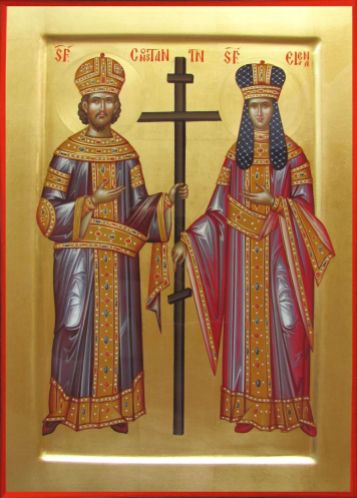















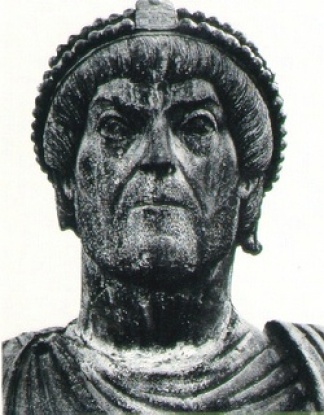








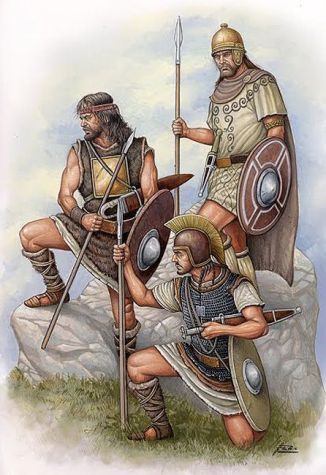








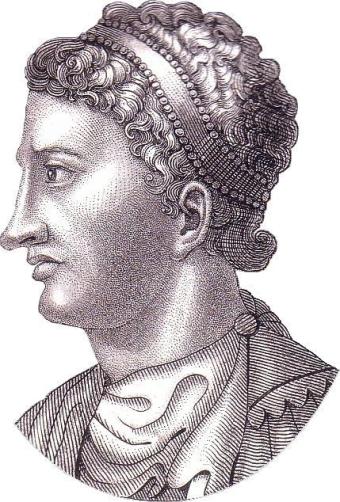






































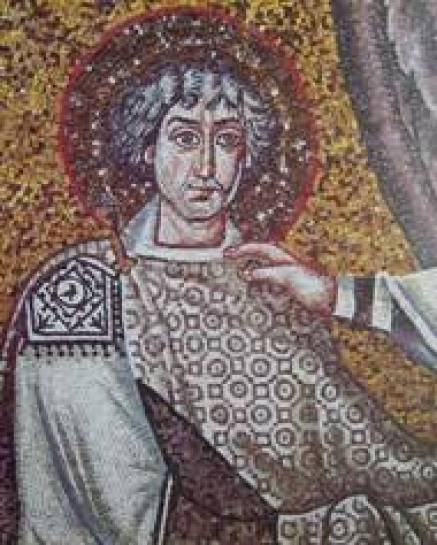








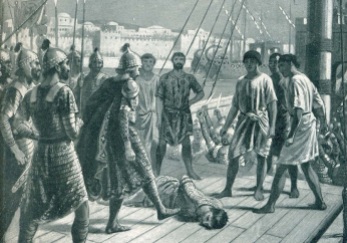

















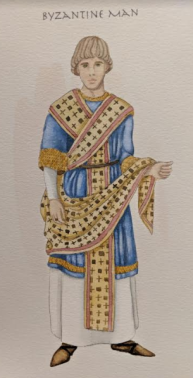




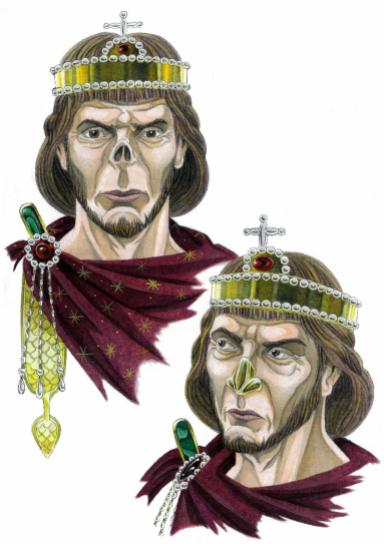
















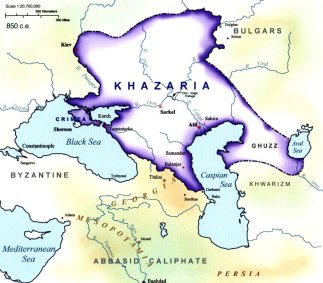

































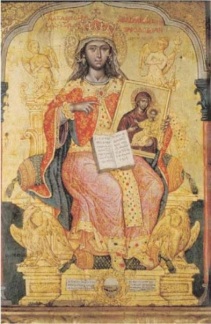












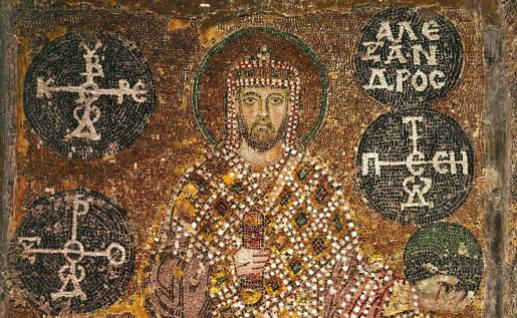


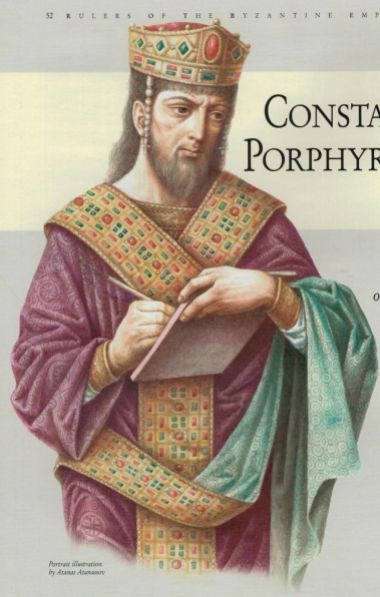

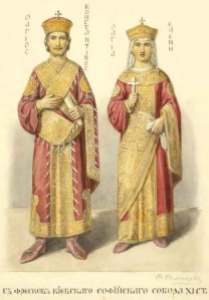








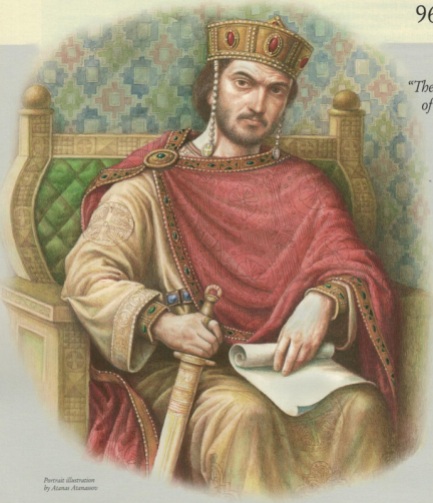


































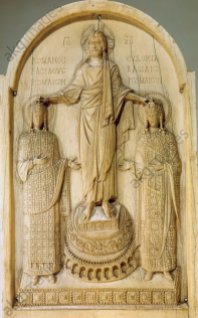




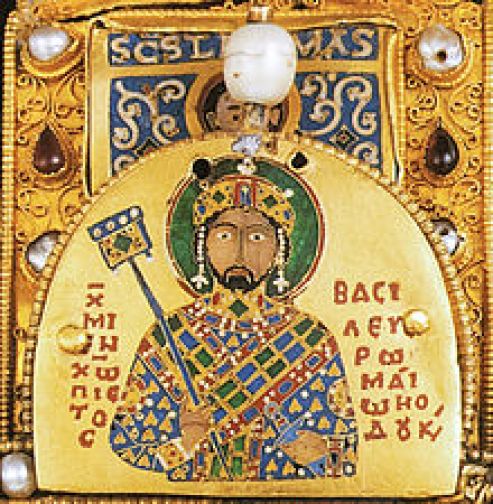




























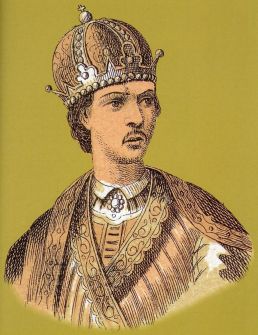


















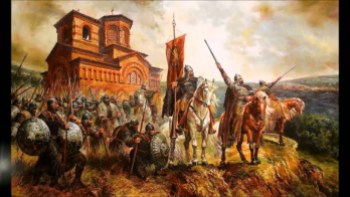













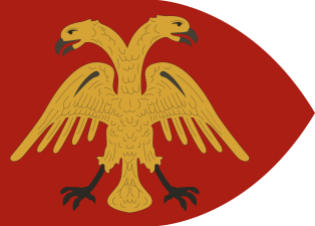





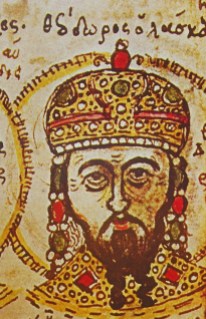
















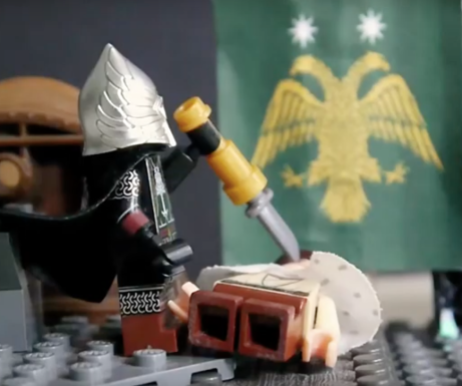






















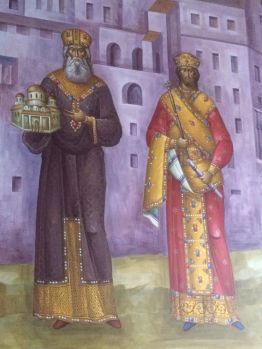


















































One thought on “The Ethnic Origins of the Byzantine Emperors”